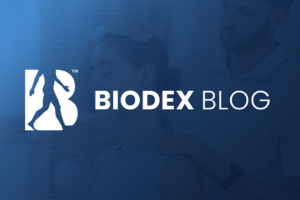
Pro Tip: QA Programs for Uptake Probes and Well Counters
Uptake probes and well counters are subject to various types of malfunctions that can lead to sudden or gradual changes in their performance characteristics.

Uptake probes and well counters are subject to various types of malfunctions that can lead to sudden or gradual changes in their performance characteristics.

In March 2020, SNMMI released a statement to address concerns about the inherent risk of COVID-19 spread to patients and staff related to the ventilation portion of ventilation perfusion (V/Q) scans.

The use of a phantom mimicking a thyroid in a neck is recommended to determine the sensitivity of the measuring device during in-vivo thyroid uptake assessments. Several sources of inaccuracy and inconsistency have been recognized over the years with this procedure. Construction of the thyroid neck phantom to simulate the absorption and scatter characteristics of a human neck was one of the first steps towards adequate standardization of the thyroid uptake test. For a realistic representation, the phantom material should have radiation absorption and scatter characteristics similar to those of human soft tissue, and the calibration depth should be about 2 to 2.5 cm. >>

Linearity testing assesses the ability of the dose calibrator to indicate the correct activity over the range of use of the calibrator. This test is usually performed using a vial or syringe of Tc-99m whose activity is at least as large as the maximum activity normally measured in a prepared radiopharmaceutical kit, in a unit dosage syringe given to a patient, or in a radiopharmaceutical therapy, whichever is largest. For users of Mo-99/Tc-99m generators this activity may be the total eluate from a fresh generator. Other isotopes can be used to perform linearity such as F-18. >>

Xenon Xe-133 Gas is supplied in a mixture of xenon gas (5%) in carbon dioxide (95%). It is contained within septum sealed glass vials and has been proven valuable in the diagnostic evaluation of pulmonary function and imaging of the lungs, as well as assessment of cerebral blood flow. >>

There is a lot of concern about diagnostic testing and the use of radiation in the medical field. The concern is equally justifiable for both the patient and health care professional during the procedure. Many reports have been published listing recommendations on how to reduce exposure to both parties. >>

Noble gases such as Xenon in the air present an external source of radiation exposure that must be calculated. Many commercially available dosimeters and survey instruments are not capable of accurately measuring worker doses from immersion in noble gases . >>

The geometry of the container (syringe or vial) that is used to measure a radioactive source can be a cause of assay errors in dose calibrators. Specifically, if there is a difference in the container used to obtain initial calibration settings and the container used to assay dosages in clinical practice. Ideally, the geometry of the standard source should be identical to the geometry of the source being measured. If the source geometry is not identical, the error in the measurement should be quantified and, if significant, either a new calibration setting determined or a correction factor applied. >>

A series of data obtained by counting a single radioactive sample repeatedly will always demonstrate variation. To determine if the variation is due to the natural randomness of radioactive decay or is due to inconsistency in instrument performance, a chi-square (x2) test is performed.
The chi-square test allows you to determine how close a series of counts would come to a true Poisson distribution (bell curve) and provides a measure of the precision of the counting instrument’s performance. >>

Radioiodinated compounds and solutions undergo decomposition that may result in the volatilization of radioiodine. If this occurs, individuals working with these materials have a potential for accidental ingestion or inhalation of radioactive iodine. Once inside the body, the iodine concentrates in the thyroid and irradiates that organ. A bioassay program will enable the Radiation Safety staff to monitor and determine the radioiodine burden in an individual’s thyroid. >>
Biodex Medical Systems
49 Natcon Drive
Shirley, New York
11967-4704
Tel: (800) 224-6339
Int Tel: +1-631-924-9000
Fax: (631) 924-8355
©Biodex 2023